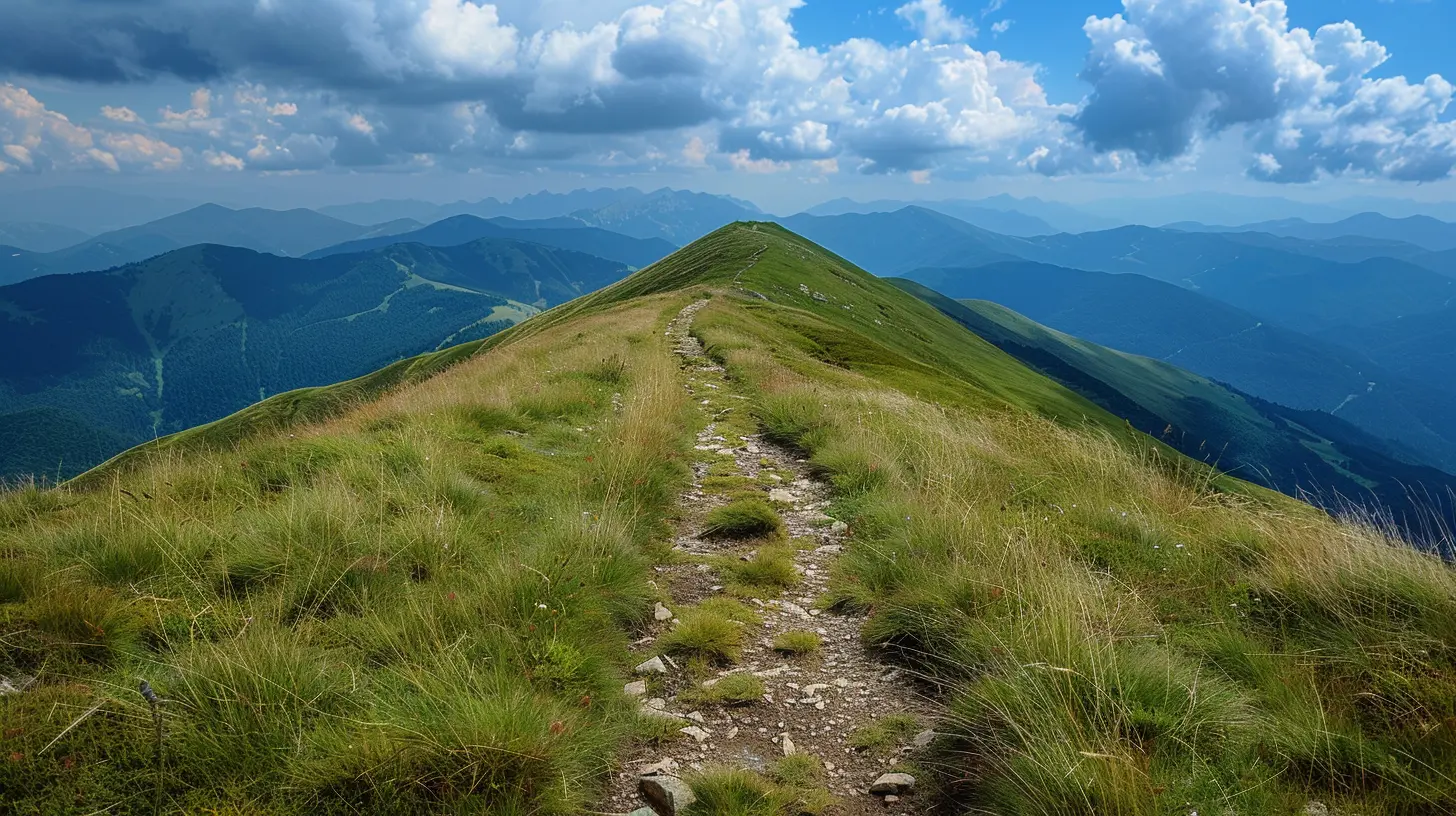How to Tackle Hills and Improve Your Running Strength
15 July 2025
Ever charged up a hill mid-run, lungs burning, legs screaming, and thought, “Why do I even do this to myself?” Yeah, we’ve all been there. Hills are like the boss level in a video game for runners. They challenge you, humble you, and—crazy enough—can make you stronger and faster if you approach them the right way.
In this ultimate guide, we’ll break down how to tackle hills like a champ and use them to build your running strength. Whether you're training for a race or just trying to conquer that monster slope in your neighborhood, this article’s for you.
Why Running Hills Is a Game-Changer
Let’s start with some straight talk: running hills is hard. But that’s exactly what makes them so effective. When you add elevation to your run, you crank up the intensity without needing to go faster. That means:- Stronger muscles: Especially in your glutes, quads, calves, and hamstrings.
- Improved form: Hills force better posture and shorter, more efficient strides.
- Increased endurance: Your heart and lungs have to work harder, improving cardiovascular fitness.
- Mental toughness: You learn how to push when every fiber of your being wants to quit.
Think of hills as nature’s resistance training for runners. It’s like running with a built-in gym.
The Science Behind Hills and Strength
Let’s geek out for a sec. When you run up a hill, gravity becomes the enemy. Your body needs to generate more force to lift and propel itself forward. That added demand activates more muscle fibers—particularly the fast-twitch ones responsible for power and speed.The cool part? That strength doesn’t just help on hills. It transfers to better speed and endurance on the flats too. So, running hills isn’t just about getting up and over. It’s about becoming a more complete, resilient runner.
The Right Mindset: Embrace the Suck
Look, we won’t sugarcoat it—hills are tough. But your attitude toward them can make or break your performance. If you're dreading every step, you’re probably going to struggle. Instead, shift your mindset:- See hills as opportunities, not obstacles.
- Celebrate small wins (like reaching the top without walking).
- Use mantras like “strong and steady,” or “one step at a time.”
Remember, hills don’t care how fit you are—they’ll challenge everyone. That’s the point.
How to Run Uphill Like a Pro
Running uphill the wrong way is like trying to drive a car in the wrong gear—you waste energy and burn out fast. Here’s how to climb smarter, not harder:1. Shorten Your Stride
Long strides on an incline will zap your energy. Instead, take smaller, quicker steps. Think of it like shifting into low gear.2. Lean Forward (A Little)
Tilt from your ankles, not your waist. Picture a string attached to your chest, gently pulling you uphill. This helps engage your core and keeps your center of gravity aligned.3. Pump Your Arms
Your arms are your secret weapon. Drive them backward (not across your body) to help generate momentum. The faster your arms move, the faster your legs will follow.4. Don’t Look Up Too Far
Staring at the top of a steep hill can be demoralizing. Keep your gaze about 10–20 feet ahead to stay mentally focused and physically aligned.5. Control Your Breathing
You’re gonna breathe harder—no doubt about it. But try to stay calm. Focus on steady inhales and exhales to avoid panicking or hyperventilating.Running Downhill Without Wrecking Your Knees
Coming down is easy, right? Actually, downhill running can do more damage than going up if done wrong. Here’s how to descend like a boss:1. Don’t Brake Too Hard
Resisting gravity by leaning back and slamming your heels creates impact—and sore knees. Instead, keep a slight forward lean and let gravity assist you while keeping control.2. Quick, Light Steps
Your turnover should increase slightly, and your feet should land directly beneath your hips. Think "dancing down" rather than "pounding down."3. Relax and Flow
Stay loose through your shoulders and arms. Tension wastes energy and jars your form.Work Hills Into Your Training
You don’t need to be a trail runner or mountain goat to train on hills. Here’s how to add them into your routine, whether you live in the Rockies or the flatlands.1. Hill Repeats
Find a moderate hill (4–8% grade) that takes 30 seconds to 2 minutes to climb. After a warm-up, sprint or run hard up the hill, then jog or walk back down. Start with 4–6 reps and build from there.2. Progression Runs
Start your run flat, then finish the last mile or two on hilly terrain to simulate race fatigue and build endurance under pressure.3. Long Runs With Natural Elevation
If possible, choose routes with rolling hills during your long runs. The up-and-down effort trains stamina and mimics race conditions.4. Treadmill Inclines
Stuck indoors? Use the incline feature to mimic hills. Alternate between flat and uphill sections to simulate outdoor terrain.Strength Training to Back It Up
Running hills is a strength workout in itself—but adding targeted strength training can supercharge your hill performance.Here are a few runner-specific moves to add to your routine 2–3 times a week:
- Lunges (forward, walking, reverse)
- Step-ups (with dumbbells)
- Single-leg squats
- Deadlifts
- Calf raises
- Core work (planks, Russian twists, leg lifts)
A strong, stable body handles hills with less effort and lower injury risk.
Recovery: The Often-Ignored Secret Weapon
Pounding up and down hills can leave your body wrecked if you don't prioritize recovery. Here’s how to bounce back stronger:- Cool down post-run with a slow jog and stretching.
- Foam roll those calves, quads, and glutes.
- Hydrate like a champ—your muscles need water to rebuild.
- Eat protein within an hour to promote muscle repair.
- Sleep well—that’s when gains really happen.
Respect the recovery, and your hills will start feeling (slightly) easier.
Tips for Staying Motivated on Hilly Routes
Let’s face it, running hills isn’t always “fun.” But it doesn’t have to be torture either. Try these tips:- Run with a buddy and hype each other up.
- Listen to pumping music—something that fires you up.
- Turn it into a game: Sprint to that tree, jog to the mailbox.
- Celebrate post-run with a reward (coffee, smoothie, nap—no judgment).
A little mental trickery goes a long way.
Hills Make You a Beast—Period
At the end of the day, hills are hard. But they’re also the secret sauce to becoming a stronger, faster, more efficient runner. Tackle them head-on with the tools you've learned here, and watch your performance skyrocket—not just on hills, but across every part of your run.So the next time you see a hill? Smile. That’s your training ground. That’s where strong runners are made.
Quick Recap
Let’s round it out with a quick checklist you can screenshot or save for your next hill session:✅ Keep strides short and quick
✅ Lean slightly forward from ankles
✅ Pump your arms to power up
✅ Look ahead, not at the top
✅ Stay relaxed on the downhill
✅ Mix hill training into weekly runs
✅ Strength train your legs and core
✅ Prioritize recovery
✅ Use music, buddies, or challenges to stay motivated
You’ve got this—step by step, hill by hill.
all images in this post were generated using AI tools
Category:
RunningAuthor:

Frankie Bailey
Discussion
rate this article
1 comments
Samuel McLaurin
Embrace the hills—think of them as nature's funhouse for runners! 🏃♂️🎢
August 2, 2025 at 2:56 AM

Frankie Bailey
Absolutely! Hills add variety and challenge, making you a stronger and more resilient runner. Embrace the fun! 🏃♂️💪


